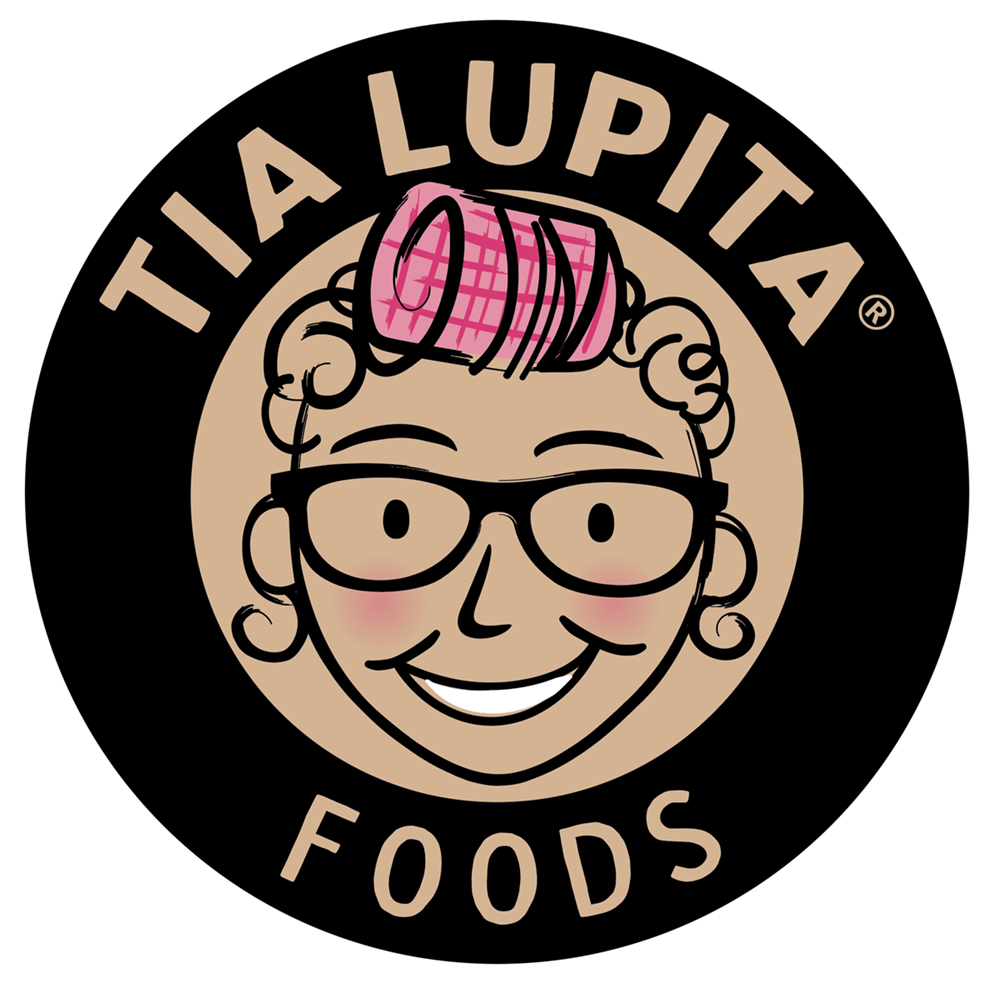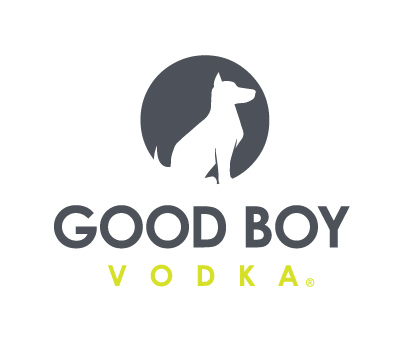Innova Market Insights’ Top Trends in Sweets and Snacks

From storytelling to low-sugar and sustainability claims — along with genuinely delicious products — there are many characteristics that can lead to success for food brands. In a webinar this week, research firm Innova Market Insights listed its Top 10 Trends in Sweets and Snacks. In a parallel event, many of those characteristics were also displayed in products at the Winter Fancy Food Show in San Francisco.
So what were Innova’s top trends, and where did we see them in San Francisco?
Lu Ann Williams, Innova Market Insights’ director of insights and innovation, noted storytelling as the top trend, saying that consumers are captivated by the stories behind their favorite food and drinks: 56% of global consumers say brand stories affect their purchase decisions. With constant internet activity and mostly standardized messaging, a unique story can be a game changer. But aside from telling a tale via front-of-pack, consumers further care where their food comes from, including the place, flavor history and process behind it. This caring, she noted, is making the industry an even more dynamic place.
“There’s never been a more interesting time to be in the food industry,” she said.
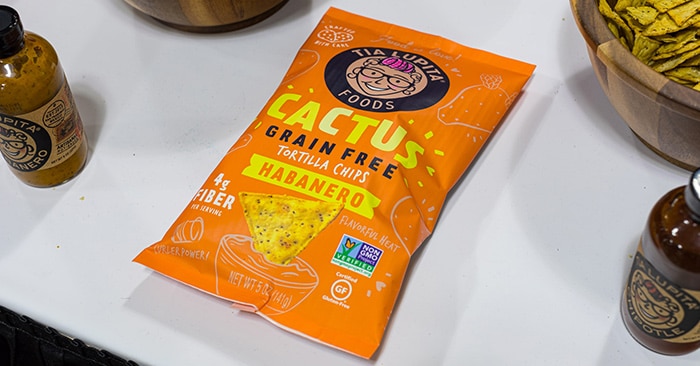
One company that was playing to its story as a strength was hot sauce and snack brand Tia Lupita, which has a line of food inspired by founder Hector Saldivar’s family heritage. At the Winter Fancy Food Show, the brand debuted a fresh pack design to better communicate its message as the company continues to build out its platform.
Additionally, many consumers love products that highlight a unique ingredient or offer an “experimental” product type, such as chocolate hummus. At the Fancy Food Show, fermented tea leaf brand Burma Love Foods debuted a new tea leaf aioli — a condiment made popular through its salads (served in its San Francisco restaurants), packaged dressings and salad kits all using tea leaves.
However, Williams suggested that if brands are highlighting new ingredients, they should seek to balance familiarity and novelty. For example, she noted, probiotics have become ubiquitous, with high awareness and acceptance amongst consumers, while newer food and drink ingredients like cannabis and cannabidiol (CBD) aren’t there yet. Blending the unfamiliar with the familiar can help lead consumers to try a product with new ingredients or flavor profiles. For example, at the show, Mama O’s launched a line of kimchi-inspired hot sauce designed to help consumers become more familiar with the Korean condiment’s flavor profile.
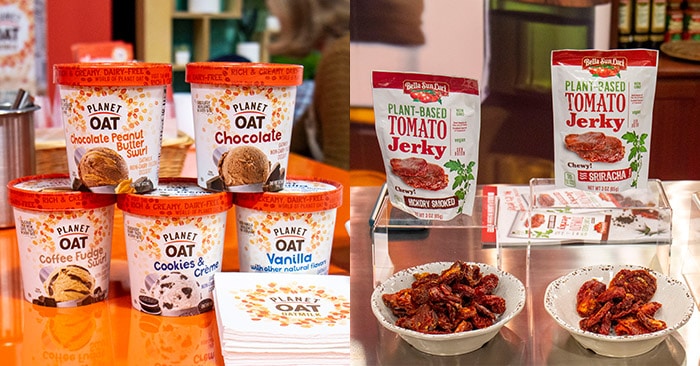
Much of consumers’ interest in innovation is in plants. Over the past year “plant-based” as a term has evolved from a trend to a revolution. Williams noted that the compound annual growth rate (CAGR) for “plant-based” sweets and snacks launched between 2015 and 2019 was 58%. The term is less polarizing than “vegan” or “vegetarian,” she explained, which has helped catapult it toward a mainstream audience. Plant-based snacks at the show ranged from produce as snacks, including new Bella Sun Luci sun-dried tomato jerky, to a variety of plant-based ice cream launches from brands including Planet Oat and organic brand Alden’s.
The next challenge for the industry, Williams noted, is prioritizing clean-label plant-based products, as two in three global consumers want products with a minimal number of ingredients, and ones that they can recognize, as well.
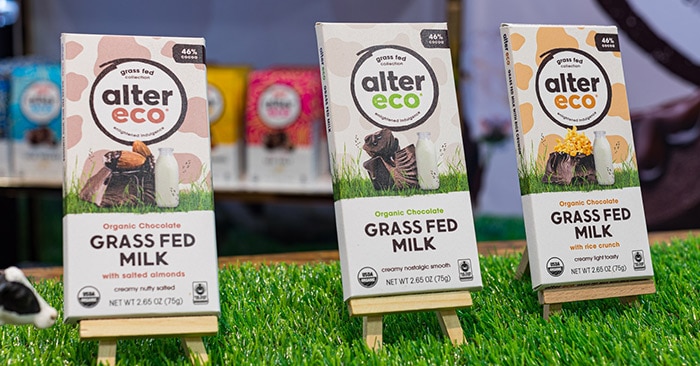
In line with the influence of clean-label eating, sustainability claims can serve as the sole reason why a consumer chooses one brand over another, Williams explained. Though only about half of global consumers list sustainability as a purchase driver, 87% of global consumers expect companies to invest in it, up from 65% in 2018. Whether that means packaging or sourcing (or both), brands can differentiate themselves by investing in sustainability efforts. At the show, okara flour brand Renewal Mill debuted Upcycled 1-to-1 Gluten-Free Baking Flour, while chocolate brand Alter Eco debuted a line of grass-fed chocolate bars. As sustainable tendencies like forgoing plastic straws become more ubiquitous, she noted, consumers will increasingly feel shocked when brands display wasteful behavior.
Many consumers are also looking for foods to help with their inward journey towards calm and mental health, Innova found. Thus, an influx of foods with functional ingredients like ashwagandha and CBD to manage stress, anxiety and sleep, is starting to reach the mainstream as new brands emerge with creative takes: Nature’s Nosh debuted its line of CBD fruit and nut bites at the show.
But there are generational differences to everyday eating priorities: Williams noted many Generation Z consumers embrace having busy lifestyles and planning efficiently — fueled by high-quality snacks in convenient pack formats, while Generation X is more likely to feel the need to indulge. In between is a consumer who seeks balance — enjoying life but needing to indulge occasionally to relax.
In addition to seeking snacks to fit their lifestyles, 70% of consumers are “tapping into texture,” often prioritizing it over a product’s ingredient deck, Williams noted. Merging consumers’ interest in both texture and plant-based products, two meat-free, crunchy pork rind snacks debuted at the show: one from snack brand Beanfields and another from Outstanding Foods’ PigOut brand.
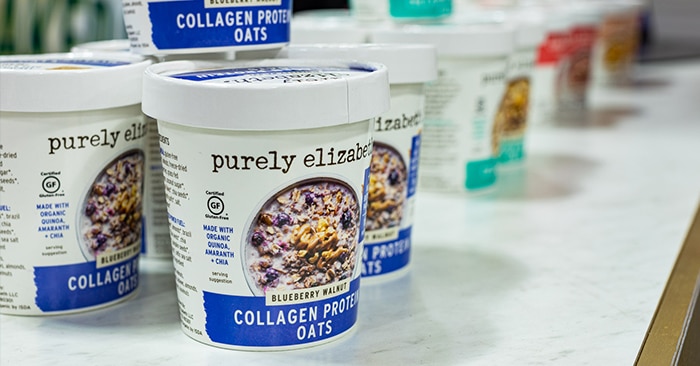
Other trends include the cross between cosmetics and food — both with food brands adding “beauty-enhancing” ingredients (such as biotin) and beauty products utilizing food ingredients (such as cookie dough body scrub). Collagen, for example, is crossing categories, appearing everywhere from supplements to drinks and foods — such as Purely Elizabeth’s collagen oatmeal — and facial cleansers, Williams noted.
Despite offering numerous paths forward for brands, Williams noted that the industry is constantly evolving — with plenty of opportunity to connect with shoppers.
“Everything is possible now, and it’s definitely making consumers excited,” Williams said.
